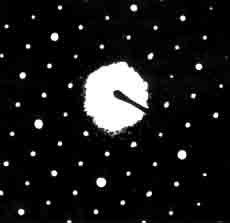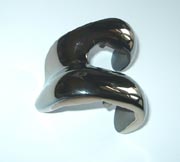|
MonoCarbon
(Monocrystalline
Carbon)
The monocrystalline carbon
coating was originally prepared by the ion-assisted deposition method
(creator - Dr. V.Levchenko)
and was later coined carbon. The basic idea was to use ion-assisted
epitaxial condensation of carbon clusters on orienting surfaces to
prepare ordered layers of linear carbon, while the carbon clusters are
produced by ion sputtering of graphite.
Structure
Properties
Fields of
Application
STRUCTURE


PROPERTIES
| |
|
SIGN |
PROPERTIES |
QUOLITY |
- Surface,
-
Surface-orientant
-
Monocrystalline
- Linear-ordered
homeotropic structure
- Vacuum
deposition
- Density
|
- Hardness
(4000-9600HV)
- Elastik
- Porous medium
- Transparent
- Treatment
temperature 300-400C
- Layer
thickness 0,005-10 µ
-
Self-lubricating properties
- Low
coefficient of friction
|
- Superior
adhesion Biocompatible
- Bioinert and
chemical inert
-
Tromboresistent
- Low
coefficient of friction
- Good corrosion
resistane
- Excellent
anti-stick behaviour
- Temperature
vacuum deposition >0C
- Extreme wear
resistance
- Low coef. Of
friction:
- 0,1 with out oil
- 0,02-0,05 with oil
|
|
|
FIELD OF APPLICATION
| |
|
Medicine
-
Prostatic device
-
Artifical Limb
-
Plaster
-
Bandage
-
Biocompatibel coatings

|
Instruments
-
Bohrer
-
Drill
-
Anger
-
Stamps
Maschines
-
Bearings
-
Motors
-
Drawing dies
-
Mandrels,
-
Curling dies,
-
Metal forming tools
-
plungers for pumps
Medicine and Chemical
|
Sport
- Ski
- Scates
- Sleigh
- Roller blades
- Swim dress
Aerospace
- Gyroskope
-
Aerospacemotors
- Construction
- Material
Electronics
Energetik
etc. |
| |
|
|
|
|
|